Blythe Masters
description: a British former banker and entrepreneur, known for her work on credit derivatives at J.P. Morgan
20 results
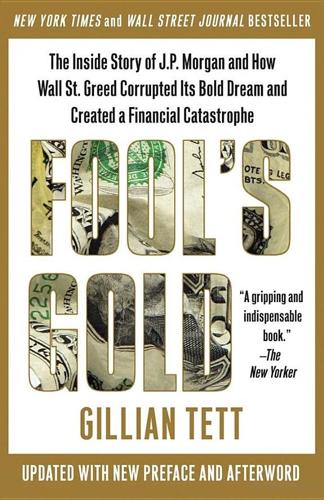
Fool's Gold: How the Bold Dream of a Small Tribe at J.P. Morgan Was Corrupted by Wall Street Greed and Unleashed a Catastrophe
by
Gillian Tett
Published 11 May 2009
“What we think of as the traditional hedge fund will shrink”: Freeland, Chrystia, and MacIntosh, Julie, “View from the Top—Andrew Feldstein, Chief Executive of BlueMountain Capital,” Financial Times (December 19, 2008). One British newspaper dubbed her the woman: Teather, David, “Blythe Masters: The Woman Who Built Financial ‘Weapon of Mass Destruction,’” The Guardian (September 20, 2008). Angry postings on the internet: see http://www.blogher.com/blame-game-global-financial-collapse-fingers-are-pointing-one-woman-blythe-masters#comments; http://zionistgoldreport.wordpress.com/2008/11/10/scam-artist-blythe-masters-speaks. When she addressed a meeting of SIFMA in New York in late 2008: Masters, Blythe, opening comments; “Through the Turmoil,” Address to SIFMA annual meeting, New York City, October 28, 2008, at http://events.sifma.org/2008/292/event.aspx?
…
One of those was Krishna Varikooty, a diligent young Indian, who was a talented mathematical modeler. Demchak would come to respect Varikooty deeply, impressed not only by his quantitative skills but also by his strong ethics and stubborn stance when fighting for something he believed to be right. “Krishna is like my conscience!” Demchak liked to joke. A particularly notable hire was Blythe Masters, a young British woman. She was a pretty blonde with a slim frame and porcelain face, who spoke with a so-called BBC accent. She had grown up in Kent, a corner of southern Britain so verdant that it’s dubbed “the garden of England,” where she studied at a prestigious private school and developed an abiding passion for horseback riding.
…
Moreover, the team knew that if they “cracked” the credit derivatives puzzle, they would solve a big problem for the bank, which would win them considerable acclaim, thereby boosting their careers. “They say necessity is the mother of invention,” Feldstein later said, smiling. “In the case of credit derivatives, we all knew there was a real need, a problem that had to be solved. So we all looked for ways to do that.” Blythe Masters fervently hunted for a way to make credit derivatives work, and eventually she spotted an opportunity at Exxon. In 1993, after Exxon was threatened with a $5 billion fine as a result of the Valdez oil tanker spill, the company had taken out a $4.8 billion credit line from J.P. Morgan and Barclays.

Blockchain Revolution: How the Technology Behind Bitcoin Is Changing Money, Business, and the World
by
Don Tapscott
and
Alex Tapscott
Published 9 May 2016
Interview with Chris Larsen, July 27, 2015. 17. Interview with Austin Hill, July 22, 2015. 18. Interview with Blythe Masters, July 27, 2015. 19. Ibid. 20. Ibid. 21. Ibid. 22. https://bitcoinmagazine.com/21007/nasdaq-selects-bitcoin-startup-chain-run-pilot-private-market-arm/. 23. Interview with Austin Hill, July 22, 2015. 24. July 2015 by Greenwich Associates; www.bloomberg.com/news/articles/2015-07-22/the-blockchain-revolution-gets-endorsement-in-wall-street-survey. 25. Blythe Masters, from Exponential Finance keynote presentation: www.youtube.com/watch?v=PZ6WR2R1MnM. 26. https://bitcoinmagazine.com/21007/nasdaq-selects-bitcoin-startup-chain-run-pilot-private-market-arm/. 27.
…
Blockchain Revolution gives readers a privileged sneak peak at the future.” —Alec Ross, author, The Industries of the Future “If ever there was a topic for demystification, blockchain is it. Together, the Tapscotts have achieved this comprehensively and in doing so have captured the excitement, the potential, and the importance of this topic to everyone.” —Blythe Masters, CEO, Digital Asset Holdings “This is a book with the predictive quality of Orwell’s 1984 and the vision of Elon Musk. Read it or become extinct.” —Tim Draper, Founder, Draper Associates, DFJ, and Draper University “Blockchain is a radical technological wave and, as he has done so often, Tapscott is out there, now with son Alex, surfing at dawn.
…
Clippinger, CEO, ID3, Research Scientist, MIT Media Lab Bram Cohen, Creator, BitTorrent Amy Cortese, Journalist, Founder, Locavest J-F Courville, Chief Operating Officer, RBC Wealth Management Patrick Deegan, CTO, Personal BlackBox Primavera De Filippi, Permanent Researcher, CNRS and Faculty Associate at the Berkman Center for Internet and Society at Harvard Law School Hernando de Soto, President, Institute for Liberty and Democracy Peronet Despeignes, Special Ops, Augur Jacob Dienelt, Blockchain Architect and CFO, itBit and Factom Joel Dietz, Swarm Corp Helen Disney, (formerly) Bitcoin Foundation Adam Draper, CEO and Founder, Boost VC Timothy Cook Draper, Venture Capitalist; Founder, Draper Fisher Jurvetson Andrew Dudley, Founder and CEO, Earth Observation Joshua Fairfield, Professor of Law, Washington and Lee University Grant Fondo, Partner, Securities Litigation and White Collar Defense Group, Privacy and Data Security Practice, Goodwin Procter LLP Brian Forde, Former Senior Adviser, The White House; Director, Digital Currency, MIT Media Lab Mike Gault, CEO, Guardtime George Gilder, Founder and Partner, Gilder Technology Fund Geoff Gordon, CEO, Vogogo Vinay Gupta, Release Coordinator, Ethereum James Hazard, Founder, Common Accord Imogen Heap, Grammy-Winning Musician and Songwriter Mike Hearn, Former Google Engineer, Vinumeris/Lighthouse Austin Hill, Cofounder and Chief Instigator, Blockstream Toomas Hendrik Ilves, President of Estonia Joichi Ito, Director, MIT Media Lab Eric Jennings, Cofounder and CEO, Filament Izabella Kaminska, Financial Reporter, Financial Times Paul Kemp-Robertson, Cofounder and Editorial Director, Contagious Communications Andrew Keys, Consensus Systems Joyce Kim, Executive Director, Stellar Development Foundation Peter Kirby, CEO and Cofounder, Factom Joey Krug, Core Developer, Augur Haluk Kulin, CEO, Personal BlackBox Chris Larsen, CEO, Ripple Labs Benjamin Lawsky, Former Superintendent of Financial Services for the State of New York; CEO, The Lawsky Group Charlie Lee, Creator, CTO; Former Engineering Manager, Litecoin Matthew Leibowitz, Partner, Plaza Ventures Vinny Lingham, CEO, Gyft Juan Llanos, EVP of Strategic Partnerships and Chief Transparency Officer, Bitreserve.org Joseph Lubin, CEO, Consensus Systems Adam Ludwin, Founder, Chain.com Christian Lundkvist, Balanc3 David McKay, President and Chief Executive Officer, RBC Janna McManus, Global PR Director, BitFury Mickey McManus, Maya Institute Jesse McWaters, Financial Innovation Specialist, World Economic Forum Blythe Masters, CEO, Digital Asset Holdings Alistair Mitchell, Managing Partner, Generation Ventures Carlos Moreira, Founder, Chairman, and CEO, WISeKey Tom Mornini, Founder and Customer Advocate, Subledger Ethan Nadelmann, Executive Director, Drug Policy Alliance Adam Nanjee, Head of Fintech Cluster, MaRS Daniel Neis, CEO and Cofounder, KOINA Kelly Olson, New Business Initiative, Intel Steve Omohundro, President, Self-Aware Systems Jim Orlando, Managing Director, OMERS Ventures Lawrence Orsini, Cofounder and Principal, LO3 Energy Paul Pacifico, CEO, Featured Artists Coalition Jose Pagliery, Staff Reporter, CNNMoney Stephen Pair, Cofounder and CEO, BitPay Inc.
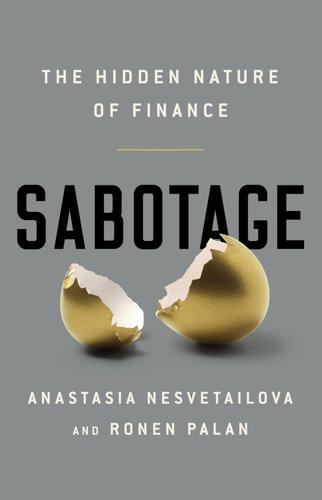
Sabotage: The Financial System's Nasty Business
by
Anastasia Nesvetailova
and
Ronen Palan
Published 28 Jan 2020
Securitization, too, remains standard practice in the financial industry, with the European Union actively encouraging the creation of the European capital market, with ‘high quality and liquid’ securitization deemed its main driver. BLYTHE MASTERS AND THE CDS18 Shortly after the revolutions launched by Milken and Ranieri, another visionary in another legendary institution would come across another opportunity. Blythe Masters and her team at J. P. Morgan would create and finesse a product which would spur the credit boom of 2002–7 and, employed as a weapon of sabotage, eventually precipitate its implosion. Traditionally, banks made money by issuing loans to the corporate sector.
…
If only banks could find a way to get rid of the risk of a default by a corporate client! This would free a lot of capital which could then be directed to other ventures and types of lending. Masters’ idea was ingenious and simple: why not insure the bank against those risks and pass them on to the insurer, thus freeing capital for other investment? Blythe Masters and her team at J. P. Morgan set off to seek such an insurer, and soon found one. American Insurance Group (AIG) was happy to provide such an insurance to J. P. Morgan, for a fee. The deal was formalized in a financial instrument which would later become known as a credit default swap (CDS). The formula devised at J.
…
Between September and December 2008 more than $50bn of payments went to counterparty banks. Goldman and Deutsche Bank AG were the largest trading parties, each receiving about $6bn.26 Could the original team at J. P. Morgan have envisaged the fall of their main insurer and a system-wide application of the security as tool of sabotage? Even in the wake of the crisis Blythe Masters would continue to defend her innovation, admitting nonetheless that ‘tools that transfer risk can also increase systemic risk if major counterparties fail to manage their exposures properly’.27 But clearly both in the design of the security itself – misnamed as a derivative – and in the way it was adopted by the market, the CDSs were used extensively to sabotage parties by allowing the banks to gamble on companies’ failure.
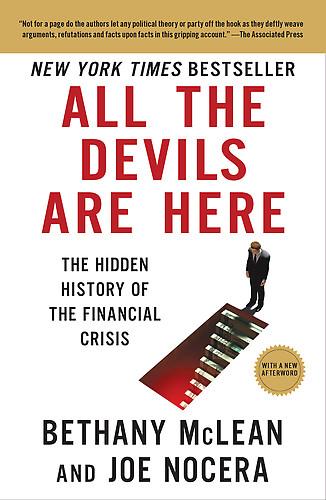
All the Devils Are Here
by
Bethany McLean
Published 19 Oct 2010
Morgan Mark Brickell Lobbyist who fought derivatives regulation on behalf of J.P. Morgan and the International Swaps and Derivatives Association. President of ISDA from 1988 to 1992. Till Guldimann Executive who led the development of Value at Risk modeling and shared VaR with other banks. Blythe Masters Derivatives saleswoman who put together J.P. Morgan’s first credit default swap in 1994. Sir Dennis Weatherstone Chairman and CEO from 1990 to 1994. Merrill Lynch Michael Blum Executive charged with purchasing a mortgage company, First Franklin, in 2006. Served on Ownit’s board. John Breit Longtime Merrill Lynch risk manager who specialized in evaluating derivatives risk.
…
It couldn’t say no, because that would alienate Exxon. Yet the loan wasn’t going to make the bank much money, and it was going to tie up hundreds of millions of dollars in capital that would have to be placed in reserve. The woman who came up with the idea of using a credit default swap to deal with this situation was Blythe Masters. Though she was not the head of the derivatives group, she was a key member of the team, a superb saleswoman who in later years would become the person most closely associated with J.P. Morgan’s entrée into swaps. After Exxon drew down its $4.8 billion line of credit, she convinced the European Bank for Reconstruction and Development (EBRD) in London to participate in a swap deal where it assumed the default risk for the loan, with J.P.
…
Second, if a tradable market existed for credit derivatives, the market itself could be used to establish a company’s default risk. This would give J.P. Morgan a better way of measuring the risks in its own commercial loan portfolio, while also giving speculators the means to bet on the possibility of a company’s default, even if they had no economic interest in the company. In the late 1990s, the bank—again, with Blythe Masters leading the way—found a way to create a credit product that investors loved. It did so by ingeniously combining credit derivatives with securitization. Instead of having a credit default swap reference a single company like Exxon, J.P. Morgan bundled together a large, diversified basket of credit derivatives that referenced hundreds of corporate credits.
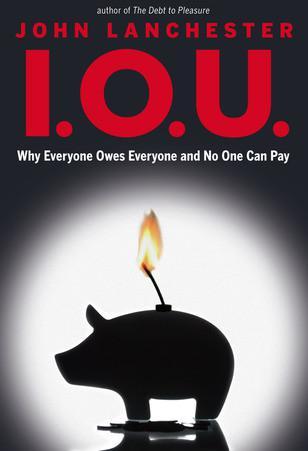
I.O.U.: Why Everyone Owes Everyone and No One Can Pay
by
John Lanchester
Published 14 Dec 2009
It limited the amount of lending they could make, the amount of risk they could take on, and therefore the level of profit they could achieve. If they lent the money to Exxon, they would have to keep an amount equivalent to 8 percent of it in reserve, just sitting there, instead of going out into the markets and making more money. At which thought, a lightbulb went on. Blythe Masters, one of the Boca Raton swaps team, came up with the idea of selling the credit line to the European Bank for Reconstruction and Development, in return for a fee. So if Exxon asked for the money, the EBRD would cough it up—and in return, it would pocket a fee from J.P. Morgan for taking on the risk.
…
They could see how profitable the new mortgage-backed versions of their CDOs were. But after taking a long, hard look at the new business, they took a pass. They simply didn’t see how the risks were being engineered down to a safe level. The other banks must be seeing some way of doing it which they couldn’t work out. Blythe Masters, the woman in charge of the Exxon Valdez deal and of selling the very first BISTRO bonds, and thus one of the creators of the entire CDS industry, was baffled by the CDO boom. “How are the other banks doing it?” she asked. “How are they making so much money?”3 According to Gillian Tett in Fool’s Gold, “she was so steeped in the ways of J.P.
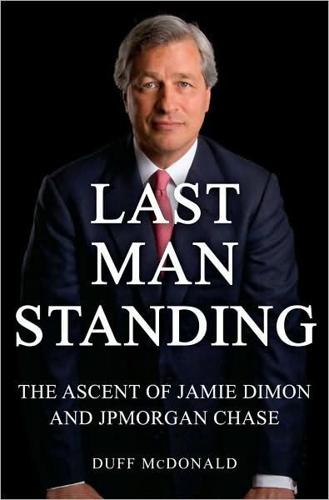
Last Man Standing: The Ascent of Jamie Dimon and JPMorgan Chase
by
Duff McDonald
Published 5 Oct 2009
“I didn’t say I’d eat my hat if it didn’t get to $100,” he recalls. “But that’s taken on a life of its own.” Sitting on a bookshelf in his office was an Australian leather hat under glass. Beneath it, a clock was counting down to zero, with only 150 days remaining—a gift from the JPMorgan Chase executive Blythe Masters. “That’s going to be hard to chew,” he laughs. Dimon stepped down from the board of Yum! Brands when he became president of JPMorgan Chase. At the time, corporate governance experts and the media had begun shining a spotlight on the issue of interlocking directorates—evidence of the clubbiness atop large American companies—and both Dimon and David Novak—the CEO of Yum!
…
The bank had suffered a large brain drain after the merger with Chase; according to one estimate, 80 of the top 100 people at the firm were gone within 18 months of the deal. But Black and Winters were rebuilding, and put together a revamped management team—hiring a trading standout, Matt Zames, from Credit Suisse; putting Carlos Hernandez in charge of equities; and moving the J.P. Morgan veteran Blythe Masters from the position of chief financial officer to overseeing commodities trading. They removed a number of management layers to enhance decision making and also revamped the company’s credit systems in the hope of more effectively controlling their exposures. Winters focused primarily on the company’s credit and trading businesses out of the London office, while Black oversaw investment banking efforts from New York.
…
The first innovation came to be known as a “credit default swap” (CDS). In looking for a way to reduce exposure to their client Exxon—which had recently tapped a multibillion-dollar credit line with the bank in anticipation of having to pay substantial fines for the Exxon Valdez’s oil spill—Winters’s colleague Blythe Masters had found another investor willing to insure the debt for the bank in exchange for an annual fee. In the process, J.P. Morgan was able to reduce its exposure to Exxon without having to sell the loan, thereby keeping client relations strong. (No corporate borrowers want to see their bank unloading their loans.)

Cloudmoney: Cash, Cards, Crypto, and the War for Our Wallets
by
Brett Scott
Published 4 Jul 2022
It is chaired by Blythe Masters, the former senior trader at J. P. Morgan infamous for pioneering the credit default swap market (which amplified the 2008 global financial crisis). A team from J. P. Morgan itself built its own DLT system called Quorum, and did so by raiding the Ethereum source code. Not only do many crypto developers now moonlight as consultants for these projects, but it has also become commonplace for bankers to sponsor and be invited to blockchain events. Hard-line anarcho-capitalists (like those described in the last chapter) might grumble as Blythe Masters takes the stage, but – much like street cats may snarl at a passing tiger while secretly in awe – many respect the famous trader who made so much money for J.

Tailspin: The People and Forces Behind America's Fifty-Year Fall--And Those Fighting to Reverse It
by
Steven Brill
Published 28 May 2018
INSURING AGAINST RECKLESS GAMBLES Two toxic ingredients that would be key factors in America’s tailspin had come together: A preoccupation with financial engineering aimed at enabling ever more aggressive betting on paper instruments had combined with still more engineering that allowed for those facilitating the bets to avoid accountability for the risks they were creating—risks whose consequences would ultimately be suffered far beyond the financial community. In fact, there would soon be a way for wary buyers of mortgage-backed securities to pass off their own risk completely. The financial engineering hero this time was Blythe Masters, a twenty-five-year-old, Cambridge-educated banker in JPMorgan’s London office. In 1994, Masters invented the credit default swap, or CDS.* A CDS is a derivative—a security that derives its value from the value of something else. For example, if Jones runs an airline and is worried that the price of $100 million worth of jet fuel will go up 10 percent or more next year, he might spend a million dollars to buy a derivative that gives him the right to buy the fuel next year at today’s price.
…
And the banks or non-bank mortgage companies—a new industry that had emerged to make home loans from funds reaped by securitizing the mortgages they sold—did not have much incentive to worry about the loans they were making, because they were going to sell the mortgages in giant tranches to those investors. Blythe Masters then made it so that the MBS investors didn’t have to care either; they could buy her credit default swaps, which were sold by banks and AIG. Those selling the default swaps assumed they were taking in pure profit, because thousands of mortgages put together in one package had no chance of experiencing so many failures that the packages themselves would ever lose significant value requiring that this insurance be paid out.
…
They understand that worrying about carbon or income inequality or innovation is their responsibility and that, whether investors like it or not, the world is going to force that responsibility on them.” We should remember that the innovators of what became the short-term-obsessed, casino economy were not villains. With some exceptions, the world does not divide that simply into black and white. Joe Flom, his raider-clients, the stock buyback engineers, Lew Ranieri and Blythe Masters, even Angelo Mozilo, didn’t set out to do harm, let alone create a crash that cost America $20 trillion in lost gross domestic product and boosted the have-a-lots far above everyone else. Even those who broke the law didn’t wake up in the morning determined to destroy the economy so they could make money.

The Truth Machine: The Blockchain and the Future of Everything
by
Paul Vigna
and
Michael J. Casey
Published 27 Feb 2018
Hyperledger is a distributed ledger/blockchain-design consortium looking to develop standardized, open-source versions of the technology for businesses to use in areas such as supply-chain management. Coordinated by the Linux Foundation, it brings together the likes of IBM, Cisco, Intel, and Digital Asset Holdings, a digital ledger startup led by former J.P. Morgan powerhouse Blythe Masters. One mark of the business world’s enthusiasm is seen in the trajectory of media company CoinDesk’s Consensus conference, the marquee annual event for businesses interested in blockchain technology. It went from a turnout of 600 at the inaugural conference in 2015 to 1,500 attendees in 2016 to 2,800 in 2017 with a further 10,500 registered viewers of an online livecast.
…
Uncertainty over whether counterparty institutions will make good on their promise to deliver either money or securities always gives investors pause. But when the market turns bearish, when fear outruns greed, that nervousness can prompt a cascade of risk-averting actions that evolve into a self-perpetuating process of wanton wealth destruction. This systemic risk problem is what drew Blythe Masters, one of the key figures behind blockchain innovation on Wall Street, into digital ledger technology; she joined Digital Asset Holdings, a blockchain service provider for the financial system’s back-office processing tasks, as CEO in 2014. Masters is best known for one of the most contentious financial innovations of our time, the credit default swap (CDS), a financial derivative contract in which one institution agrees to pay another if a particular bond or loan goes into default.

Cryptoassets: The Innovative Investor's Guide to Bitcoin and Beyond: The Innovative Investor's Guide to Bitcoin and Beyond
by
Chris Burniske
and
Jack Tatar
Published 19 Oct 2017
While Bitcoin was still king, there were growing whispers of “blockchain not bitcoin,” which was heresy to Bitcoiners. The term blockchain, independent of Bitcoin, began to be used more widely in North America in the fall of 2015 when two prominent financial magazines catalyzed awareness of the concept. First, Bloomberg Markets published an article titled “Blythe Masters Tells Banks the Blockchain Changes Everything: The banker who helped give the world credit-default swaps wants to upend finance again—this time with the code that powers bitcoin.”13 In emphasizing “the code that powers bitcoin,” this article quietly questioned the need for the native asset, instead emphasizing the underlying technology.
…
Bitcoiner refers to an advocate of Bitcoin. 10. We’ll describe wallets in detail in Chapter 14. 11. http://www.bankofengland.co.uk/publications/Documents/quarterlybulletin/2014/qb14q3digitalcurrenciesbitcoin1.pdf. 12. http://insidebitcoins.com/new-york/2015. 13. https://www.bloomberg.com/news/features/2015-09-01/blythe-masters-tells-banks-the-blockchain-changes-everything. 14. http://www.economist.com/news/leaders/21677198-technology-behind-bitcoin-could-transform-how-economy-works-trust-machine. 15. The computers are not technically miners because they are not minting any new assets and they are not paid directly for their work. 16. http://www.nyu.edu/econ/user/jovanovi/JovRousseauGPT.pdf. 17. http://www.gartner.com/newsroom/id/3412017. 18. http://www.gartner.com/technology/research/methodologies/hype-cycle.jsp.

Why Wall Street Matters
by
William D. Cohan
Published 27 Feb 2017
Exxon, a longtime client, wanted a $5 billion line of credit to cover potential liabilities related to the massive 1989 oil spill from the Exxon Valdez oil tanker in Prince William Sound, Alaska. The conundrum? The bank did not want to disappoint Exxon, but neither did it want to tie up so much capital in one marginally profitable, very risky loan. That’s when the British-born Blythe Masters, then twenty-five years old, came up with the idea of off-loading the risk of the loan to a third party, in exchange for a fee, thus skirting the regulatory requirement that J.P. Morgan tie up capital against the risk posed by the Exxon loan. In short order, a new industry was born: the buying and selling of risk in what became known as “credit default swaps,” a form of insurance policy that allowed creditors to buy insurance against the chance that a given loan or bond would default.
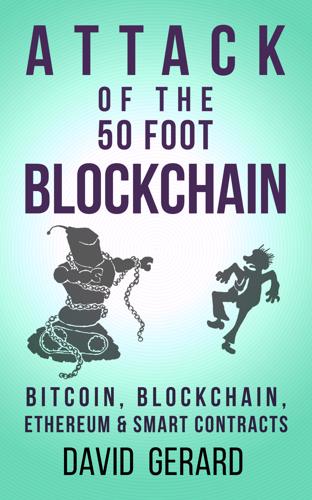
Attack of the 50 Foot Blockchain: Bitcoin, Blockchain, Ethereum & Smart Contracts
by
David Gerard
Published 23 Jul 2017
Even Bitcoin blog CoinDesk notes: “Among the doubts facing Hyperledger is a perceived lack of clarity on what might be ultimately produced by the initiative.”391 If you click long enough, you’ll find a page where the participating companies have dumped their unfinished blockchain experiments.392 The main code contributor is Digital Asset Holdings; their joining announcement (on their own site, not hyperledger.org) gives as technical details only that Hyperledger is an append-only ledger and has an actual Bitcoin-style blockchain in it.393 (Digital Asset Holdings was founded by Blythe Masters, pioneer of the credit default swap, the financial instrument behind the global financial crisis of 2008 that may have provoked Nakamoto to finally release Bitcoin.) Sawtooth Lake: Intel’s contribution to Hyperledger.org replaces the blitheringly stupid and wasteful Proof of Work with something equally stupid but less wasteful, Proof of Elapsed Time,394 which might as well be called Proof of Buying An Intel CPU.
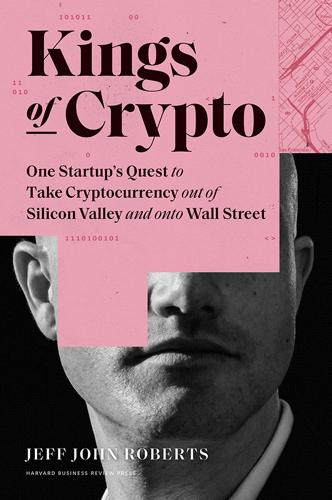
Kings of Crypto: One Startup's Quest to Take Cryptocurrency Out of Silicon Valley and Onto Wall Street
by
Jeff John Roberts
Published 15 Dec 2020
The most famous figure in American banking—JPMorgan Chase CEO Jamie Dimon—made clear what he thought of cryptocurrency, flatly telling the press that bitcoin would not survive. But even as the lords of Wall Street sneered at cryptocurrency, not all their soldiers were so skeptical. At Coinbase, a growing pile of job applicants listed New York firms as their current employer. At Dimon’s own firm, in a high-profile defection, senior executive Blythe Masters left to run a blockchain startup called Digital Asset. Masters was already renowned on Wall Street for inventing credit default swaps, the contracts Warren Buffett correctly labeled as “time bombs,” which could (and did) set off a financial crisis. Now, she would become the face of a faction in the crypto world known as “blockchain, not bitcoin.”
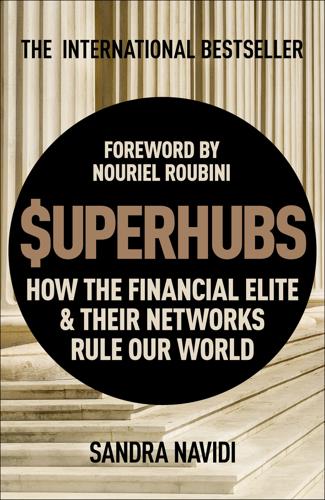
SUPERHUBS: How the Financial Elite and Their Networks Rule Our World
by
Sandra Navidi
Published 24 Jan 2017
It accuses the bank of a macho culture in which the marginalization of women was endorsed and males received preferential and disproportionate promotions and pay.35 Many financial institutions settle lawsuits with multimillion-dollar payouts to avoid publicity-ridden trials that would uncover other injustices, such as lower compensation for the same type, amount, and success of work.36 At the time of the book’s completion the lawsuit was still ongoing. Blythe Masters, one of Wall Street’s top female executives, ended her twenty-seven-year career at JPMorgan after the bank reported the sale of the global commodities unit she had led to record revenues of close to $3 billion. She was previously the CEO of JPMorgan’s investment bank, and when the crisis erupted in 2007 she became the subject of public abuse, presumably at least partially because she stood out as being capable as well as noticeably attractive and feminine.37 The realities of the contemporary workplace are sobering and frustrating for a generation of women raised to believe that if they had an excellent education they’d have a merit-based career.
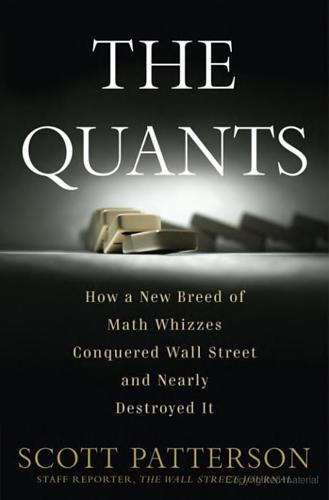
The Quants
by
Scott Patterson
Published 2 Feb 2010
Muller is known to be the ace of the group, Asness the rookie. Other fund managers not named also frequently played in the game. 9 “I KEEP MY FINGERS CROSSED FOR THE FUTURE” Growing up in Seattle, Brown had: Interviews with Aaron Brown. Enter the credit default swap: “The $12 Trillion Idea: How Blythe Masters and the ‘Morgan Mafia’ Changed the World of Finance,” by Gillian Tett, FTMagazine, March 25–26, 2006. The first Bistro deal: “Credit Derivatives: An Overview,” by David Mengle, International Swaps and Derivatives Association, published for the 2007 Financial Markets Conference held by the Federal Reserve Bank of Atlanta, May 15, 2007.
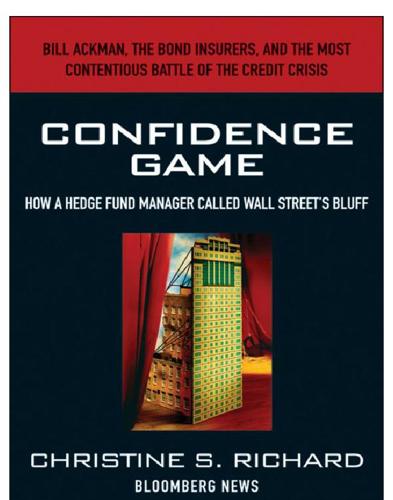
Confidence Game: How a Hedge Fund Manager Called Wall Street's Bluff
by
Christine S. Richard
Published 26 Apr 2010
The protection buyer—in Wall Street parlance—makes regular payments over the life of the contract to the protection seller, who promises to make a lump sum payment to the insurance buyer if a security defaults. The cost of the insurance rises and falls minute by minute based on the market’s perception of the company’s credit quality. Default protection on a company with a triple-A rating, which MBIA had in 2002, could be purchased cheaply because the risk of default was perceived to be de minimus. Blythe Masters, a 26-year-old Trinity College graduate working at JPMorgan in 1995, is often credited with having invented CDS contracts. The contracts were created as a way for commercial banks to reduce their exposure to corporate borrowers. By purchasing protection against a default, the bank took on a position that would offset losses if a borrower defaulted.
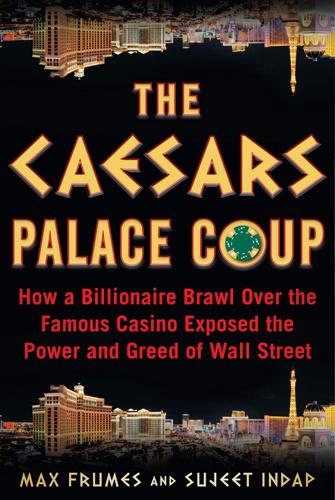
Palace Coup: The Billionaire Brawl Over the Bankrupt Caesars Gaming Empire
by
Sujeet Indap
and
Max Frumes
Published 16 Mar 2021
His derivative choice was the credit default swap, or CDS. Buyers and sellers of CDS were betting whether companies could repay their debts in full. In this case, purchasing CDS would pay off if Caesars defaulted or went bankrupt. Banks created CDS to keep debt on their books while offloading risk. A young JPMorgan executive, Blythe Masters, had created CDS to help the firm hedge default risk related to a $5 billion loan to Exxon. A buyer of CDS is effectively purchasing insurance that pays off if a company defaults. For example, if a bond of a bankrupt company settled at twenty-five cents, the CDS seller would owe the buyer seventy-five cents to make them whole.

How Markets Fail: The Logic of Economic Calamities
by
John Cassidy
Published 10 Nov 2009
The 1997 deal accomplished several things: it removed $9.7 billion in credit risks from Morgan’s balance sheet, freeing up capital the firm could use elsewhere; it transferred these risks to other financial institutions that had more of an appetite for them; and it created securities that could be traded, thus allowing investors to get exposure to an asset class—bank loans—that they had previously been excluded from. To a traditional banker, the idea of separating risk from lending seemed revolutionary. In her informative account of the recent development of the credit markets, Fool’s Gold, Gillian Tett, a reporter at the Financial Times, describes the thinking of Blythe Masters, one of the members of the Morgan team. Separating lending and risk “would overturn one of the fundamental rules of banking: that default risk is an inevitable liability of the business . . . For the first time in history, banks would be able to make loans without carrying all, or perhaps even any, of the risk involved themselves.”

The Finance Curse: How Global Finance Is Making Us All Poorer
by
Nicholas Shaxson
Published 10 Oct 2018
Credit default swaps weren’t insurance or bets, the obliging Potts opined, in the process rubber-stamping the non-regulation of CDSs in London, and opening the gates to unlimited, unregulated betting on the credit defaults – the life and death – of companies. This overturned one of the most fundamental rules of banking: that a bank should have ‘skin in the game’, carrying some of the default risk of a loan on its own shoulders. The implications were immense. ‘The business opportunities created by credit derivatives,’ purred Blythe Masters, a top member of the JP Morgan team, ‘is [sic] frankly staggering.’ In 1996, the year before Potts wrote his opinion, there were an estimated $150–200 billion worth of CDSs already out there, already a very large number. Ten years later, as the financial crisis began to bite, that number had risen three hundredfold to over $60 trillion – roughly equivalent to the gross domestic product of planet Earth.26 So the banks believed they had obtained an exemption from regulation for these exciting new instruments – at least in London.

Them And Us: Politics, Greed And Inequality - Why We Need A Fair Society
by
Will Hutton
Published 30 Sep 2010
Consequently, the team was much less confident about the nature of the risks it was buying or what would happen in different parts of the United States in the event of a house price downturn. One default could be correlated with another. But Bayerische demanded the deal, so Morgan reluctantly took it on – with an extra funding cushion and complex risk hedging. Nevertheless, ‘We just could not get comfortable,’ admitted Blythe Masters, the executive in charge. Over the next ten years Morgan, and Masters in particular, would wonder how other banks could make the securitised debt vehicles pay. The answer was that they dropped their internal controls, bent VaR and expanded their balance sheets at any price. They were aided and abetted by the credit-rating agencies offering spurious Triple A ratings using precisely the same risk-assessment techniques, having been paid by the institutions doing the issuing.